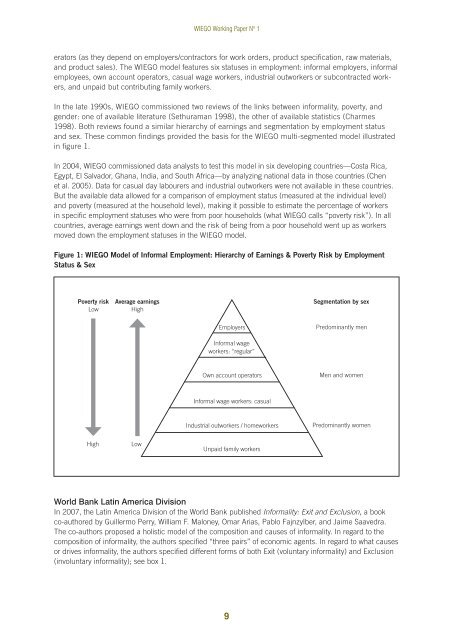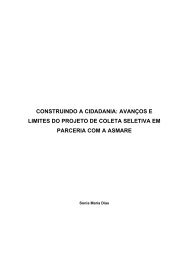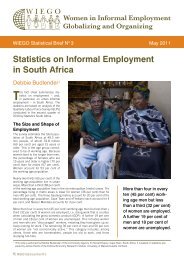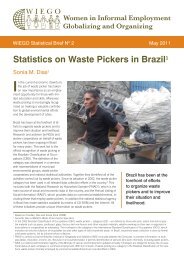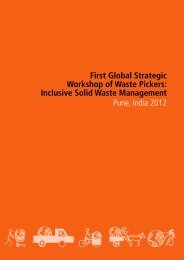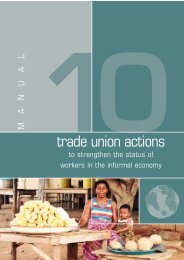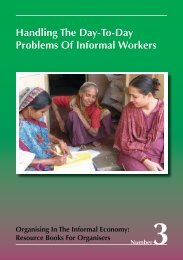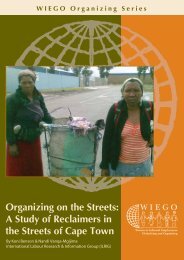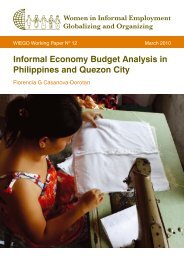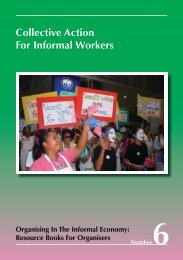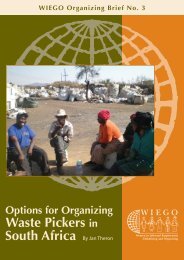The Informal Economy: Definitions, Theories and ... - Inclusive Cities
The Informal Economy: Definitions, Theories and ... - Inclusive Cities
The Informal Economy: Definitions, Theories and ... - Inclusive Cities
Create successful ePaper yourself
Turn your PDF publications into a flip-book with our unique Google optimized e-Paper software.
WIEGO Working Paper N o 1<br />
erators (as they depend on employers/contractors for work orders, product specification, raw materials,<br />
<strong>and</strong> product sales). <strong>The</strong> WIEGO model features six statuses in employment: informal employers, informal<br />
employees, own account operators, casual wage workers, industrial outworkers or subcontracted workers,<br />
<strong>and</strong> unpaid but contributing family workers.<br />
In the late 1990s, WIEGO commissioned two reviews of the links between informality, poverty, <strong>and</strong><br />
gender: one of available literature (Sethuraman 1998), the other of available statistics (Charmes<br />
1998). Both reviews found a similar hierarchy of earnings <strong>and</strong> segmentation by employment status<br />
<strong>and</strong> sex. <strong>The</strong>se common findings provided the basis for the WIEGO multi-segmented model illustrated<br />
in figure 1.<br />
In 2004, WIEGO commissioned data analysts to test this model in six developing countries—Costa Rica,<br />
Egypt, El Salvador, Ghana, India, <strong>and</strong> South Africa—by analyzing national data in those countries (Chen<br />
et al. 2005). Data for casual day labourers <strong>and</strong> industrial outworkers were not available in these countries.<br />
But the available data allowed for a comparison of employment status (measured at the individual level)<br />
<strong>and</strong> poverty (measured at the household level), making it possible to estimate the percentage of workers<br />
in specific employment statuses who were from poor households (what WIEGO calls “poverty risk”). In all<br />
countries, average earnings went down <strong>and</strong> the risk of being from a poor household went up as workers<br />
moved down the employment statuses in the WIEGO model.<br />
Figure 1: WIEGO Model of <strong>Informal</strong> Employment: Hierarchy of Earnings & Poverty Risk by Employment<br />
Status & Sex<br />
World Bank Latin America Division<br />
In 2007, the Latin America Division of the World Bank published <strong>Informal</strong>ity: Exit <strong>and</strong> Exclusion, a book<br />
co-authored by Guillermo Perry, William F. Maloney, Omar Arias, Pablo Fajnzylber, <strong>and</strong> Jaime Saavedra.<br />
<strong>The</strong> co-authors proposed a holistic model of the composition <strong>and</strong> causes of informality. In regard to the<br />
composition of informality, the authors specified “three pairs” of economic agents. In regard to what causes<br />
or drives informality, the authors specified different forms of both Exit (voluntary informality) <strong>and</strong> Exclusion<br />
(involuntary informality); see box 1.<br />
9


